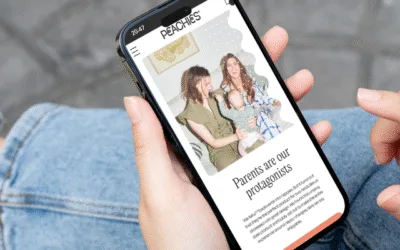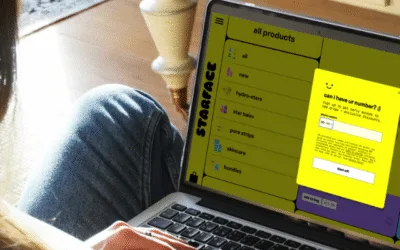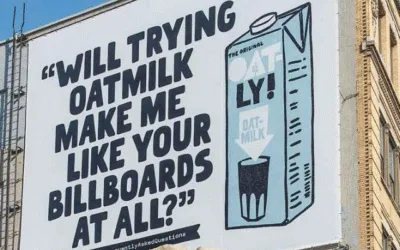Peachies beat Pampers by selling sleep, not nappies. Learn their Ladder of Why messaging trick to make your copy resonate.
How you can write copy that turns returns and refunds into repeat customers
Refunds don’t have to feel like throwing revenue away. With the right copy, you can turn them into your brand’s secret weapon for winning customers' loyalty.
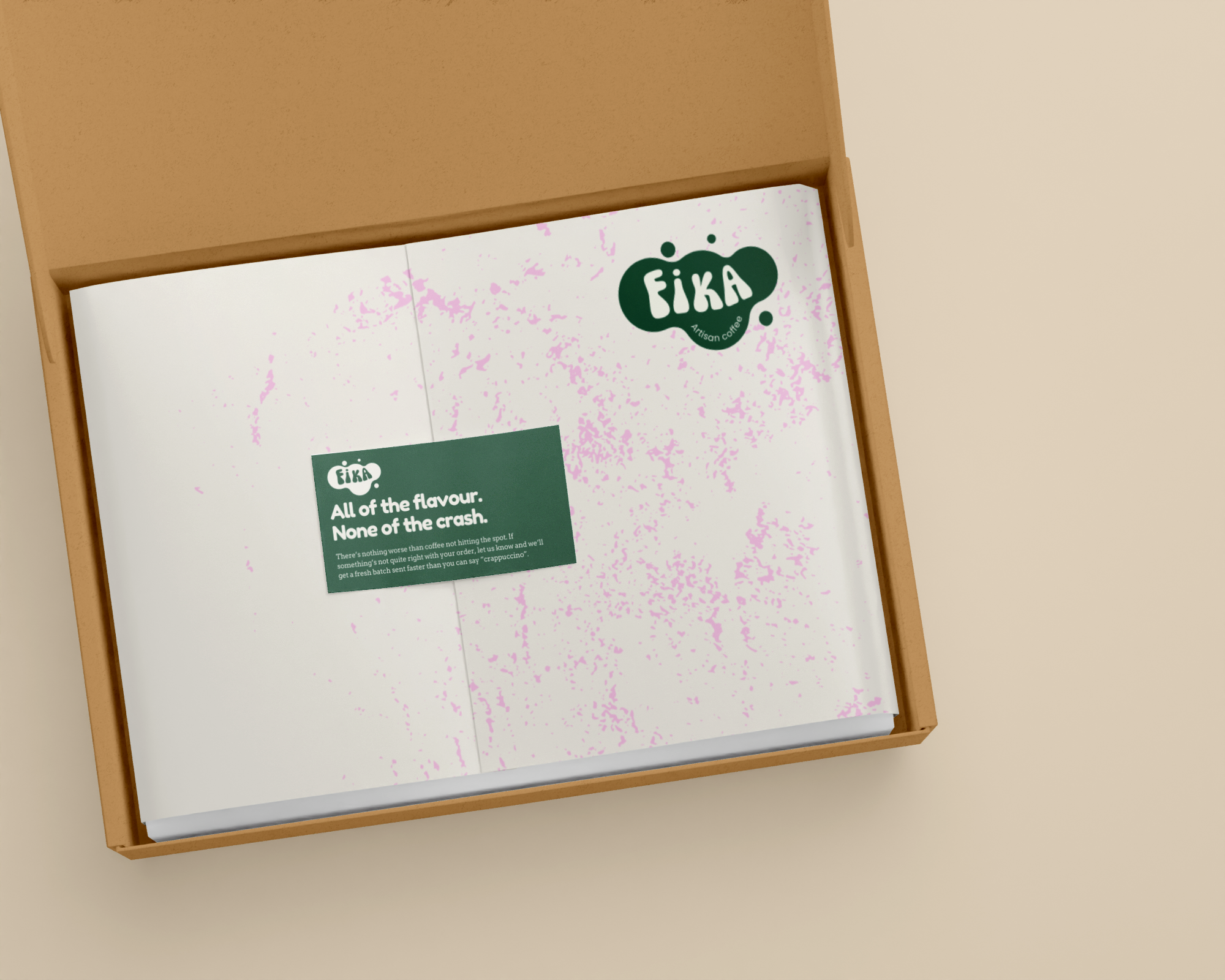
Get pro copy tips, branding tricks and e-comm insights directly to your inbox every Tuesday.
The new year is a weird time for ecomm brands.
You come back from a break, fresh and raring to go, riding the high of Black Friday and Christmas sales.
Then you get whacked with the reality of one of the slowest months of the year (not just in terms of sales, but also the fact that January seems to last about six months).
Oh, and you also have to deal with the dreaded Returnuary.
January is statistically the worst month for customers changing their mind. Whether it’s because they didn’t quite think their order through, have had a post-Christmas change of heart or what arrived wasn’t quite what they expected, returns shoot up by 17% on average every January.
On top of that, every year sees customers making more returns. Last year in the US returns reached a huge $890 billion (up from $743 billion in 2023). For context, that’s more than the GDP of Hong Kong, Czech Republic, Croatia and Latvia put together. Absolutely bonkers.
Refunds are a fact of ecomm life. But they don’t have to be the end of the road.

We wish we could tell you there was a way to avoid customers returning products. Alas not.
Even if your product arrives perfectly and is exactly what your customer expected to receive, people still change their minds.
Humans are just messy like that.
And while it’s easy to feel like a return is something you’ve just got to chalk up as a loss and move on… consumer psychology actually shows us that refunds are a massive opportunity to create a stronger customer relationship that leads to more sales down the line 👇️
👉 A study by Narvar found that 96% of customers who had a positive return experience would shop with the retailer again.
👉️ This is sometimes called the service recovery paradox, where customers like a brand more after you resolve an issue for them in a satisfactory way than if everything goes swimmingly from A-Z
In other words, with the right messaging and approach, returns can be a shortcut to winning customer loyalty.
In the same way that a bad return experience sends customers to your competitors faster than you can say “terms and conditions apply”, a good experience turns frustration into trust and then into advocacy. Boom.
The proof is in the pudding 👇
Years ago, before Do Words Good was even a spark of an idea, I (Jack) was working with a grow-your-own produce startup brand when the shit hit the fan. Thousands and thousands of plants had been shipped out in non-climate-controlled trucks and arrived shriveled and dead.
To nobody’s surprise, refund requests poured in, and it looked like the very early-stage brand was deader than the plants they’d sent out.
After an hour of utter panic, we thought we’d try and reframe the situation to see if we could turn things around. (Because really, what else could we do?)
We sent refunds with personalised emails, we owned up to the mistake, and we even provided a constant supply of plant care tips to help customers salvage what they could. And for good measure, we offered discounts on the next batch.
And what could have been a disaster turned into something like 70% of customers coming to back order a second batch and rave reviews about the brand’s honesty and care.
The takeaway? How you handle returns and refunds makes the difference between loyal customers and a bad Trustpilot review. And most of that really comes down to the words you use.
And while old-school copywriters will tell you copy is all about getting the sale, modern copy (especially for early-stage e-comm brands) is more holistic. Sometimes it needs to sell, sometimes it needs to build trust and sometimes it needs to reassure and fix situations.
With a few little touches and tweaks, the right words can transform returns into moments of connection and loyalty.
So let’s dig into how you can dial up your return process and copy and always get customers to come back 👇
Step 1: Build trust with a return policy that’s customer-centric, friendly and easy to understand
A few years ago, you wouldn’t have thought about checking a returns policy before buying. You’d hit buy and be done with it.
But customers are far more skeptical now, with more people than everare skimming your returns policy before they even think about clicking that Buy Now button.
In fact, nearly 20% of online shoppers abandon their carts because they don’t feel confident about the return process.
That’s bonkers.
Around a fifth of your potential sales could vanish in an instant because your policy is confusing, intimidating, or buried in legal jargon.
Here’s where a slight change of mindset can make a massive difference: your return policy page isn’t just a legal requirement now, it’s a massive marketing tool.
If almost 20% of your customers are going to check it out, changing it up is a huge quick win to turn every “What if I don’t like it?” seed of doubt into an “I trust this brand to have my back.” decision to buy.
How to write a winning return policy
- Clarity rules: Ditch the legalese and opt for simple, friendly language like:
👉 “If you’re not 100% happy, return it within 30 days—no drama.” - Generosity wins: Your customers are busy. The last thing you want is a customer realising they’re stuck with your product because they ran out of time. Instead, make policies that go above and beyond to put the customer first. Zappos offers a 365-day return policy and has built a reputation as a bastion of customer service.
- Shout about it: Your refund policy shouldn’t be buried in the footer. Highlight it on product pages, in emails, and during checkout.

Top tip: use TLDR to make lawyers and customers happy
We’ve worked on enough returns policy pages to know that there’s usually a scrum between marketing and legal teams.
The legal team insists that it needs to be in airtight legalese. Your customers keep emailing saying it’s all a bit confusing. And you’re left crying over your keyboard because the whole document ends up sounding like it was written by a Charles Dickens character.
(Definitely not based on a true story.)
Here’s how we — after much trial and error — found a way to make everyone happy:
Make sure it’s written in Plain English, not legalese. Legalese isn’t just confusing for customers, studies show that even lawyers hate it. Plain English is much easier for customers to skim and it doesn’t feel like you’re trying to trip them up with hidden clauses.
Use TLDRs at the end of every section. Even Plain English copy isn’t going to get read when it’s in huge paragraphs. Instead, we like to add a TLDR to the end of every section summarizing the key points. Not only does this make it easier for customers to understand what you’re saying, but you build trust by drawing attention to it too.
Here’s how that looks in action 👇️
Step 2: Be empathetic and treat the customer like a person, not a task
Returns are emotionally charged situations.
At best, a customer is frustrated that they have to go through the effort of returning the item. At worst, they’re pissed off and heading straight over to Trustpilot.
And when your refund process feels cold or transactional, you’re compounding on this frustration or anger by making it feel like you don’t give a shit about your customers.
(Often times, this feels like a rope-a-dope switch up from the super-friendly language they got before they purchased. AKA It all feels a little “If you’re not sticking around, we’ll stop pretending to care.”)

Returns are the time to double down on empathy, not abandon it
Behavioural psychology tells us that people judge experiences based on how they felt during key moments. This is called the Peak End Rule, where decide how we feel about something based on the peak of the experience and the end of it.
(Think Game of Thrones… do you remember the early seasons? Or do you shudder at how it ended? Returns are a bit like that. You need to stick the landing.)
In fact, a Forrester study found that customers who feel respected and understood during returns aremore likely to recommend a brand to others.
This is an instance of where your tone of voice matters just as much as your actions.
Functionally, there’s no difference between“Return request processed” and “We’re sorry this didn’t work out. We’ve issued a refund.”
But for a customer, the difference is night and day.
Look at how Chewy nail refund emails 👇️
Steal their emails: Chewy smashes it when it comes to empathetic refunds. When a customer returns an order because their pet passes away, Chewy doesn’t just refund the purchase but also sends flowers and a heartfelt note. *chef’s kiss*
If you’re taking a look at your own customer emails, you could do far worse than taking a leaf out of Chewy’s book. (You can peep some of their emails here!)
TLDR: Bake empathy into your return emails
- Say thank you: Make your mother proud with a simple thank you and it’ll go a long way.
👉 “Thanks for giving us the chance to make this right. We can’t wait to get everything spot on next time!” - Personalised notes: People don’t want to be treated like “just another customer” so make them feel special. When you’re handling their return, make it personal even if it’s an automated process.
- Acknowledge that things haven’t gone to plan: Using phrases like “We’re sorry this wasn’t quite right for you.” makes the customer feel seen and takes the sting out of the interaction.
- Assure them it’s going to get sorted: Make sure your brand is a partner not a gatekeeper. Say things “Don’t worry—we’ve got your back.” or “Let’s make this right.“ to make sure you’re hitting those trust-rebuilding signals.
- End on a high: Make sure you thank customers for giving you the chance to make things right. (This is a clever trick, because it compounds two behavioral quirks — Pratfall Effect, where we like people more when they’ve messed up, and the Ben Franklin Effect, where we trust somebody if we’ve done a favour for them. In this instance, thanking them for letting you fix things is both acknowledging a mistake and making it feel like they’re doing you a favour. Wicked smaht.)
Step 3: Give them a reason to return after the return
You know how earlier we said that humans are messy? We weren’t lying.
Behavioral science tells us that people hate losing something more than they enjoy gaining it.
So when a customer is sending something back, its not uncommon for them to feel like they’re losing twice—first, the product they were excited about, and second, the time and effort they spent shopping.
The solution? Reframe the return as a win instead of a loss.
Give them an unexpected bonus to turn their returns experience into a net plus. (“It was a bit of a pain to return the hoodie, but I got 15% off a new t-shirt and free next-day delivery. Winner!”)
- Offer discounts: Turn a refund into a stepping stone to a future order including a future purchase incentive. For example:
👉 “We’re sorry this wasn’t the perfect fit. Here’s 20% off your next order—because we’d love to try again!” - Free shipping on their next order: Shipping fees can often deter returns, but offering free shipping for their next purchase can create goodwill and reduce friction for repeat sales.
💡 Pro tip: Use personalization to reinforce the relationship. Address customers by name, reference their specific product, and remind them why they chose your brand in the first place.
For example:
👉 “Hi [Name], we understand that the [Product] wasn’t what you expected, but we’d love to help you find something that fits your needs better. Here’s a curated list just for you!”
Step 4: Make the customer feel seen
You ever sent something back and got a confirmation that just screams boilerplate?
If you’re buying from Amazon or some faceless brand, this is the norm. You’re not going to lose sleep over it.
But if you’re buying from a cool ecomm brand that you’ve been following for a while, getting one of these emails can feel a little deflating.
(We’ve said it before, but it’s a bit like going on a date with somebody and waking up to find an Elon Musk poster above their bed. 🤮 )
What we’re saying is this: returns are already a bit of a bummer for your customers and cookie cutter emails only make them worse.
But using their name — even if it’s 100% automated — makes a huge difference. It shows customers you actually care about them and not just making sales.

Here’s how to get it right 👇
- Use their name (duh): As Beyonce tells us, using a customers name is the simplest way to make emails feel tailored and to build trust. Pretty much every email platform makes it easy to add a first name field to your emails, so use it. Don’t have their name? A friendly greeting and a wave emoji is a handy fail-safe. (Dear customer vs Howdy 👋)
- Reference the product: Make sure you mention the specific item they’re returning to show you’re paying attention. Like this 👉 “Hi [Name], we’re sorry the [Product] wasn’t the perfect fit. Let’s make it better.”
- Tailor a few recommendations: Just because they’re returning one product, it doesn’t mean they’re not interested in your other products. Show off other products based on what they bought and returned.
Like this 👉️ “Not your style? We’ve picked a few items we think you’ll love!”
Take a leaf out of ASOS’s book and go beyond surface-level personalisation by integrating behavioural data directly into their email. If a customer regularly shops for fitness gear, recommend similar items during the refund process.
Or use data from past purchases to send messages like: “We noticed you loved [X Product] before. Maybe you’ll like these instead?”
With tools like Klaviyo or Postscript, you can automate personalised messages easily without losing the human touch. You can quickly set up templates that pull customer names, product details, and relevant recommendations, so every message feels bespoke.
By personalising every stage in the refund process, you can turn a frustrating experience into one that feels personal. You can show your customers that you actually care and want them to have the best experience and that’s a pretty good reason to keep coming back.
Step 5: Ask for feedback without being pushy
Returns aren’t just about getting a product back—they’re really good chance to make your products and processes better.
Getting to know why customers send stuff back is a great way to iron out any issues with sizing, descriptions, or even your marketing strategies.
But it does more than that. Customers who feel their opinions are valued are significantly more likely to stay loyal to a brand.
But asking for feedback needs a delicate touch.
Before you do ask for any feedback, you need to make sure the return process is complete. If you ask halfway through the return (before they’ve got their refund or replacement product) don’t be surprised if you get ignored or bad feedback.
Once you’ve completed the return, then ask for feedback. Make it as simple as possible and give them an incentive if you can 👇
- Keep it as simple as possible: Stick to a single, clear question that takes no more than a minute to answer.
👉 “What didn’t work for you? Let us know—it only takes a minute!” - Make it easy: Use one-click surveys or emoji-based rating scales to lower the barrier for participation.
👉 Example: A “thumbs up or thumbs down” button works wonders when paired with an optional text box for details. - Frame it as a win-win: Show your customers how their feedback will help create better experiences for them and the community. (AKA, make them feel like part of something bigger.)
👉 “Your feedback helps us improve for customers like you!”
How to use feedback to level up your returns process
Even if you absolutely nail everything we’ve recommended, there’s still going to be room for improvement. There’s always going to be tweaks you can make to your process to give your customers a better experience 👇
- Spot trends: Is one product driving more returns? Dive into the data to see if tweaks to its description, size guide, or photos could cut down on future refunds.
- Adjust your messaging: Are customers misunderstanding what they’re buying? Use feedback to refine your product pages or ads.
- Iterate smarter: Loop feedback back to your product team to fine-tune designs or solve recurring issues.
When done right, asking for feedback improves your processes and products but it also boosts trust massively. Customers see that you care about their experiences, even when things don’t go perfectly and they remember it.
Returns are just the beginning
Unfortunately, copy can’t make returns any less of a logistical headache for your e-comm store. (That would be nice, wouldn’t it!)
But if you nail your returns process and copy, it can take them from being a pain in the arsenal to a huge opportunity to win back customers and keep them buying.
After all, customers don’t just remember what went wrong—they remember how you made it right. And when you treat returns as moments to build trust, you’re creating advocates who’ll rave about your brand to their friends because you went the extra mile. (Even if 90% of that extra mile was automated.)
So, next time you’re looking at your returns messaging, remember this:
👉 Write a return policy that’s customer-friendly and not drowning in legalese.
👉 Add a dash of empathy to every email, response, and interaction.
👉 Sweeten the deal with discounts or special offers to encourage repeat purchases.
👉 Stick the landing with a positive, memorable final impression.
👉 Personalise every step—because no one wants to feel like just another order number.
👉 Ask for feedback to learn, grow, and show customers you care.
Dive into more free tips and tricks 👇
How Starface use orthography to build a killer brand voice their customers love
The words you write matter. But so do your full stops, emojis and lowercase letters. Learn how to turn punctuation into a powerful part of your brand voice.
Why Oatly’s brand voice is so damn good (and how yours can be, too)
We dig into the three layers of brand voice (10,000ft, 1,000ft, ground level), show how Oatly nails each one and how you can do it for your own brand.
The weekly newsletter that takes your brand’s copy from “meh” to “hell f*cking yeah!”
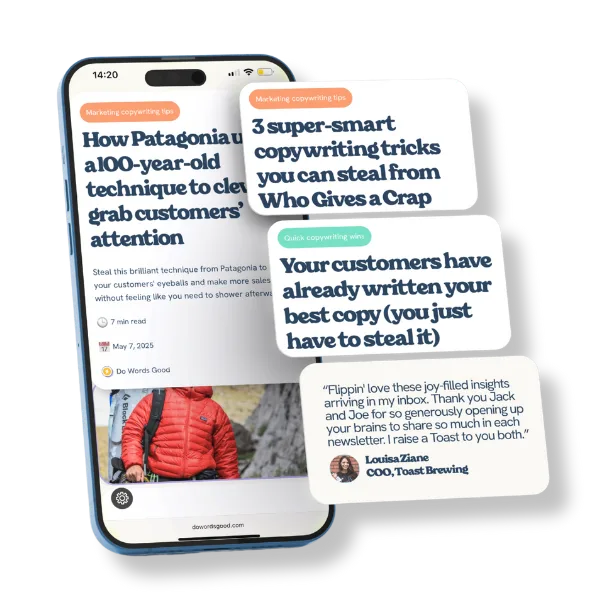
Read every week by legends at brands like these











